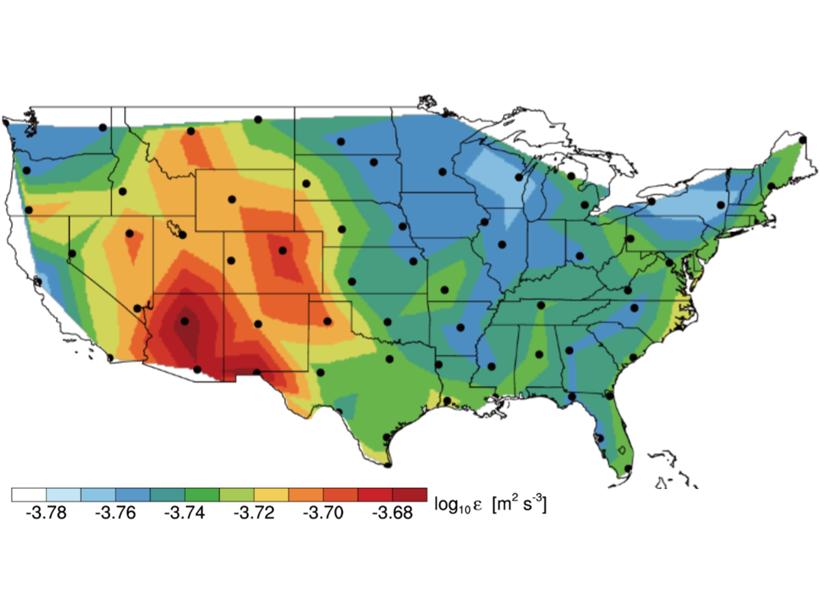Source: Journal of Geophysical Research: Atmospheres
Absolute measurements of turbulence in the atmosphere are difficult to obtain, and it is even harder to get large amounts of reliable observations. Ko et al. [2019] present turbulence characteristics derived from a large data set of twice-daily, high-vertical-resolution (approximately 5 meters) radiosonde balloon measurements at 68 stations over the United States, using several years of data. Analysis is based on deducing unstable thermodynamic vertical structure using the so-called “Thorpe analysis”, which is becoming widely accepted as a true measure of turbulent energy dissipation rates.
Results in this study highlight stronger turbulence and energy dissipation in the troposphere than in the stratosphere, with a strong seasonal cycle and geographic structure in troposphere statistics (see map above). These results provide novel characterization of turbulence behavior on large spatial and temporal scales, which are useful for aviation turbulence studies and for improving numerical weather prediction models.
Citation: Ko, H.‐C., Chun, H.‐Y., Wilson, R., & Geller, M. A. [2019]. Characteristics of atmospheric turbulence retrieved from high vertical‐resolution radiosonde data in the United States. Journal of Geophysical Research: Atmospheres, 124. https://doi.org/10.1029/2019JD030287
—William J. Randel, Editor, JGR: Atmospheres
Text © 2019. The authors. CC BY-NC-ND 3.0
Except where otherwise noted, images are subject to copyright. Any reuse without express permission from the copyright owner is prohibited.

